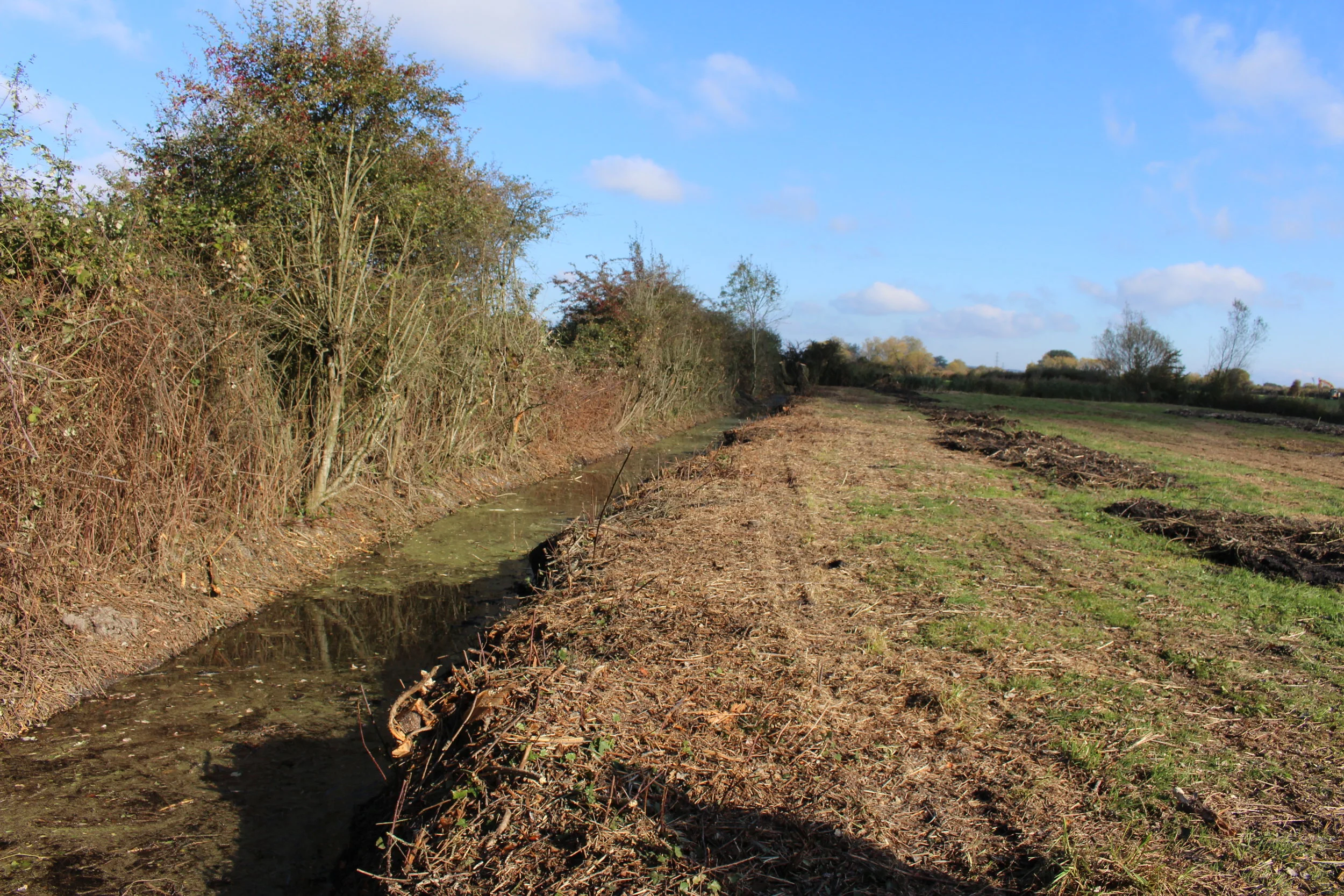The LLNH-1 Targeted Natural Heritage Restoration project provides a capital restoration budget for conservation work which targets the growing issue of abandonment of field ditch management along with the restoration of ancient orchards and other key heritage features in decline or in a degraded condition. These include willow trees in need of pollarding, field grips in danger of disappearing, wet meadows in decline and the lack of adequate habitat for Shrill Carder bee and other pollinating insects.
The first season of work (October 2018 -March 2019) has concentrated on the Caldicot side of the Levels, in year two (September 2019-March 2020) work will move on to the Wentlooge side. Progress to date is as follows:
Field ditch restoration - We have identified 8.3km of ditch restoration for year one. Works has started on scrub clearance, desilting and casting. By the end of December 2018, we are aiming to have over 5km cleared and 3km de-silted and cast. This goes some way to maintaining and increasing the amount of habitat for the important flora and fauna found in these ditches.
Orchards – a large historic orchard in Goldcliff has been cleared of 8000m2 of bramble to reveal some veteran apple, pear and walnut trees. We will be returning to this site in the spring to carry out DNA testing and to take cuttings for propagation. This will give us home-grown stock to plant up new and existing orchards on the Gwent levels.
Pollarding – this is a traditional part of the Levels landscape, and it reduces shading of the reens and ditches which can have a detrimental impact on the flora and fauna. Twelve large trees have been pollarded, this will help protect the trees from natural damage such as splitting, falling and blocking the field ditches. The wood left standing is important for invertebrates, and small mammals.
This management is improving the biodiversity value of the Gwent Levels, benefit the SSSI, and will restore the landscape’s traditional mixed mosaic character, particularly by opening up again the areas which have become shaded and dry. As a secondary benefit, it will also contribute to improving water quality, and may help reduce flood risk in some localised areas.
Works are being prioritised on the basis of landscape and habitat benefits as judged by a panel of experts from Gwent Wildlife Trust, RSPB Cymru and Natural Resources Wales. Eligible management activities include:
1. Field ditch re-casting
2. Willow pollarding
3. Field re-gripping
4. Orchard pruning and maintenance
5. Orchard planting with local varieties (could be new and existing)
6. Meadow restoration linked with seed harvesting locally
7. Where landowners are happy the project could also involve improved access or interpretation at certain suitable points if opportunities arise.
If you think you may have any land which may be eligible for funding or you might be interested in volunteering to help with these activities, please contact Kate for further information.









